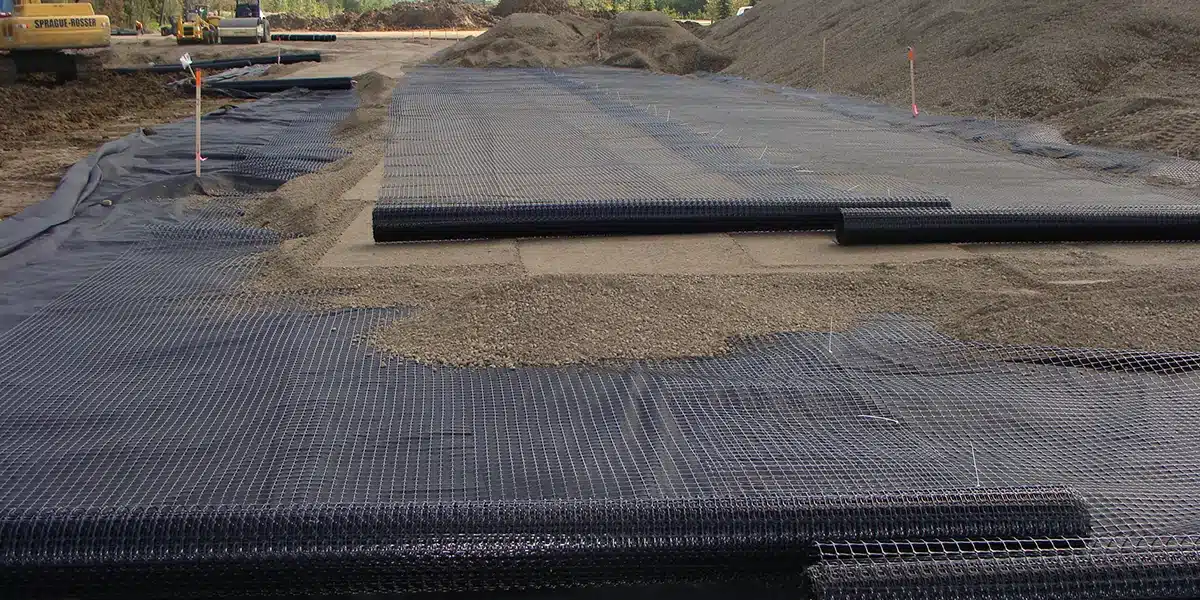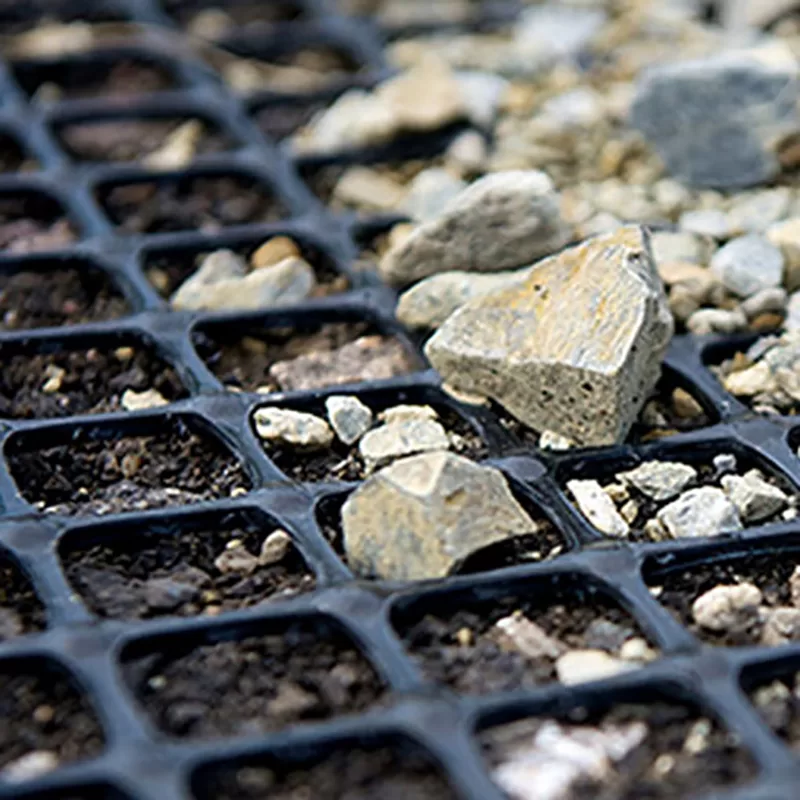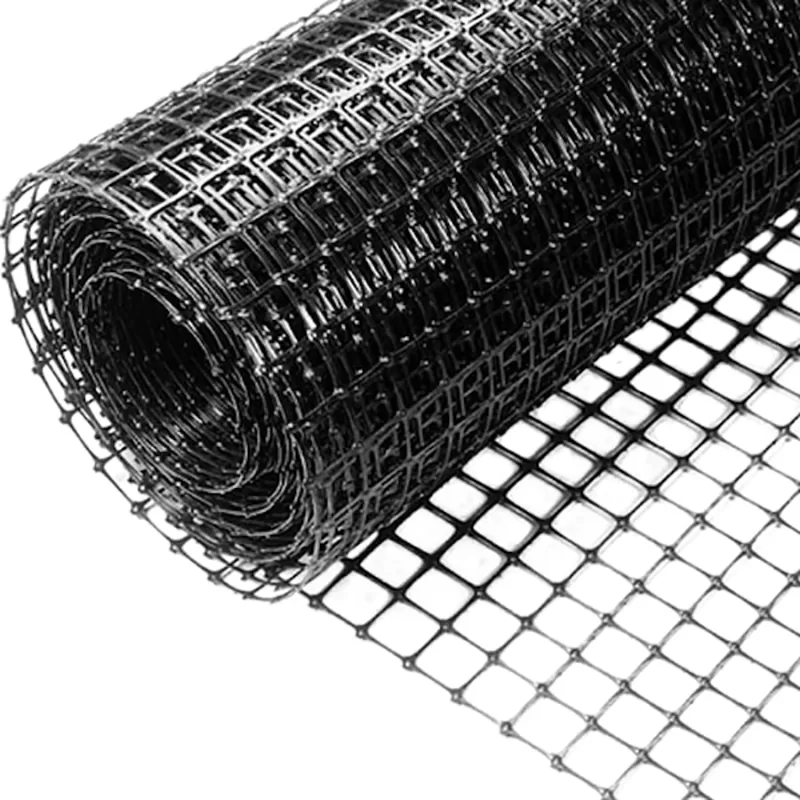+86-159 9860 6917
info@geofantex.com
geofantex@gmail.com
+86-400-8266163-44899
Retaining walls are essential structures used to hold back soil, prevent erosion, and create usable land in sloped areas, especially when dealing with 36”-48” exposed wall heights. One crucial component in the construction of a durable and effective retaining wall is the use of geogrids. These synthetic materials are designed to reinforce the soil and improve the wall’s stability. This article explores the best practices for using geogrid in retaining walls and answers common questions about its application.
When Should You Use Geogrid on a Retaining Wall?
Geogrids are typically used in retaining walls to enhance the wall’s strength and stability. You should consider using Geogrid in the following situations:
- Height of the Wall: Geogrid becomes essential for walls taller than three to four feet in height to prevent them from leaning or collapsing.
- Soil Conditions: In areas with poor soil conditions, such as clay or loose sand, geogrid helps to stabilize the soil and provide additional support.
- Load-Bearing Needs: Geogrid reinforcement is crucial when the retaining wall is expected to bear significant loads, such as supporting a road or structure.
- The slope of the Land: On steep slopes, geogrid helps to distribute the weight and pressure more evenly, reducing the risk of failure.

When Should You Use Geogrids Rather Than Geotextile?
While both geogrids and geotextiles are used in retaining wall construction, they serve different purposes. Used primarily for soil reinforcement, geogrids should be chosen instead of geotextiles in the following situations:
- Reinforcement is Required: Geogrids are designed to reinforce soil, providing tensile strength that geotextiles cannot offer. If your wall needs additional structural support, geogrids are the better choice.
- Dealing with Large Soil Movements: Geogrids are more effective in situations where significant soil movement or shifting is expected, as they provide better stabilization.
- Load Distribution: For applications requiring the distribution of heavy loads, geogrids are superior due to their strength and rigidity.
How Many Layers of Geogrid for Retaining Wall?
The number of geogrid layers required for a retaining wall depends on several factors, including the wall’s height, soil type, and load conditions. A general rule of thumb to keep in mind is that the Geogrid Length = 0.8 x Retaining Wall Height. Generally, the guidelines are as follows:
- Wall Height: For walls up to 6 feet (1.83 meters), a layer of geogrid every 2 feet (0.61 meters) of height is common practice.
- Soil Stability: In unstable or loose soil conditions, additional layers may be necessary to ensure adequate reinforcement.
- Load Requirements: For walls supporting heavy loads, more frequent layers of geogrid (every 1.5 feet or 0.46 meters) can provide extra support.
Should I Use Geogrid for Retaining Walls?
In most cases, using geogrid for retaining walls is highly recommended due to its numerous benefits. Incorporating geogrid can be an incredibly important step to creating a long-lasting retaining wall that’s functional and attractive:
- Increased Stability: Geogrids significantly enhance the structural integrity of retaining walls, preventing failures and collapses.
- Extended Lifespan: By reinforcing the soil and distributing loads more effectively, geogrids can increase the lifespan of your retaining wall.
- Cost-Effectiveness: While there is an initial investment in geogrid materials, the reduction in maintenance and repair costs over time makes it a cost-effective solution.
- Versatility: Geogrids can be used in a variety of soil types and wall heights, making them a versatile option for many projects.
Using geogrid in retaining walls is a crucial step in ensuring their stability, durability, and longevity. Geogrids provide essential reinforcement, especially for taller walls, poor soil conditions, and heavy load-bearing applications. By understanding when and how to use geogrid, you can construct a retaining wall that effectively serves its purpose and stands the test of time. Whether dealing with challenging soil conditions or requiring additional structural support, geogrid is a valuable tool in modern retaining wall construction.



Get Free Sample
We’ll respond as soon as possible(within 12 hours)






















